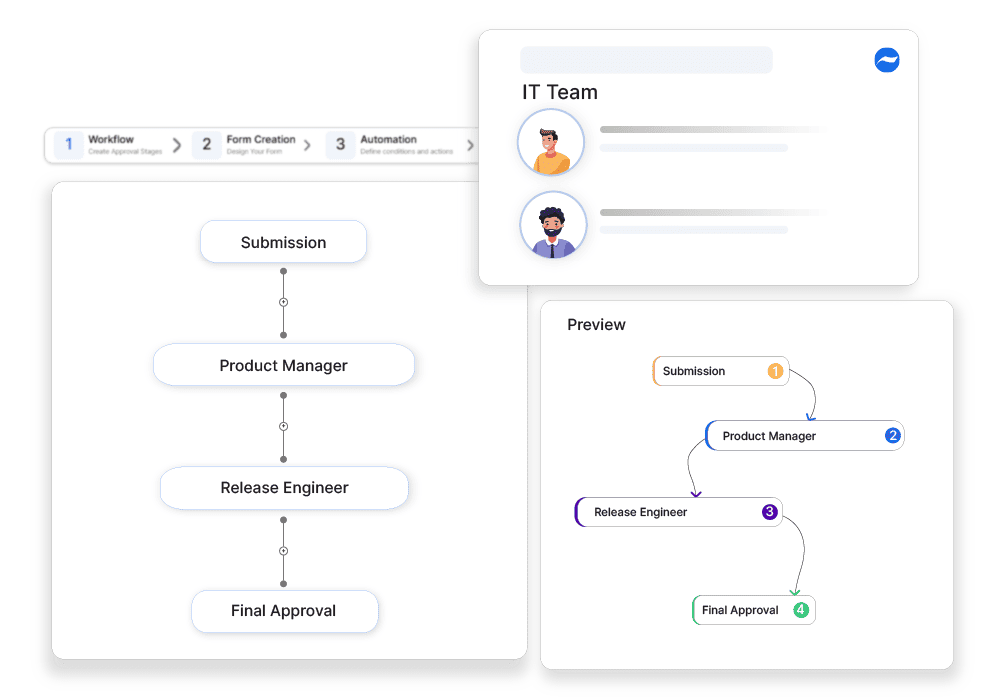Feature Flag Rollback and Recovery Workflow
Automate feature flag rollback approvals to ensure controlled feature deactivation and prevent system instability.

Why automate?
Feature flags allow teams to control the activation of specific functionalities without redeploying code. However, if a new feature causes performance issues or security risks, quick rollback approvals are necessary to revert changes safely. Without structured approvals, teams may disable or modify feature flags without proper validation, leading to unexpected behaviors and unmonitored rollbacks. Manual rollback handling slows down response times, increasing operational risk. Cflow helps to automate Feature Flag Rollback Approvals, ensuring that rollback requests are properly reviewed, prioritized, and executed with minimal risk, preventing system instability.
How Cflow Helps:
Approval-Based Feature Rollback Execution
Cflow ensures that all feature flag deactivations follow structured approvals, preventing premature rollbacks.
Compliance with Release Control Standards
Approved rollback actions align with agile development and DevOps policies, ensuring consistency.
Faster Response for Critical Feature Rollbacks
Urgent rollbacks receive priority approvals, reducing downtime caused by faulty features.
Full Audit Log for Feature Flag Rollbacks
Cflow logs all approved rollback requests, helping teams track deployment outcomes.
Frequently Asked Questions
What is feature flag rollback and recovery?
A process to quickly disable or revert new features without requiring a redeployment.
What are the main challenges?
Improper flag configurations, dependency on other features, and delayed recovery.
How can it be improved?
By using mature feature management platforms, grouping flags logically, and setting clear fallback states.



